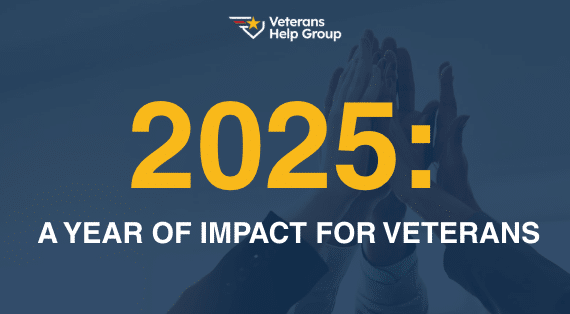Table Of Contents
If you have been diagnosed with a heart condition, you may qualify for VA disability benefits. Below the most common heart conditions are outlined as well as how to establish a service connection.
What are the Most Common VA Heart Conditions?
Coronary Artery Disease (CAD)
Coronary artery disease (CAD) is the most common type of heart disease. It occurs when the arteries that supply blood to the heart muscle become hardened and narrow. CAD is usually caused by the buildup of cholesterol and other material, called plaque on the artery’s inner walls. Symptoms of CAD include pain or discomfort in areas of the upper body (i.e. arms, back, and neck), difficulty breathing, sweating, indigestion, etc.
Hypertension
Hypertension is also called high blood pressure. Blood pressure is determined by both the amount of blood the heart pumps and the amount of resistance to blood flow in the arteries. The more blood the heart pumps and the narrower the arteries, the higher the blood pressure.
Hypertension can lead to health complications and increase the risk of heart disease, stroke, and death. If a veteran develops an additional heart condition, such as CAD, due to their hypertension, they can receive a secondary rating for CAD.
How to Establish a Service Connection for Heart Conditions?
Direct Service Connection
To establish a direct service connection for heart conditions veterans must demonstrate:
- a current diagnosis of a heart condition;
- an in-service event, injury, or illness; and
- a medical link between the current diagnosis and in-service event.
Presumptive Service Connection – Agent Orange
A presumption of exposure means that if a veteran has qualifying service the VA will presume that they were exposed to certain harmful chemicals or hazards. If the VA concedes exposure and a veteran develops certain health conditions they may be eligible for service connection on a presumptive basis.
CAD is an example of a condition that can be granted on a presumptive basis. Veterans with CAD who served in Vietnam between January 9, 1962, and May 7, 1975, should get VA benefits under this presumption.
Secondary Service Connection
A secondary service-connected disability is one that is aggravated by an already service-connected condition. There is medical literature that states certain medical conditions can cause or aggravate heart conditions. One example would be that diabetes has been associated with the subsequent development of heart conditions.
There is also a connection between a diagnosis of PTSD and heart conditions. Secondary service connection may be applicable where medications used to treat a service-connected condition causes or aggravate a heart condition.
How does the VA Rate Heart Conditions?
The VA rates heart conditions under the ratings for Cardiovascular Systems. The rating is primarily based on a test called a metabolic equivalent test (METs), otherwise known as exercise testing.
METs measures the energy cost on your heart during different physical activities. It also measures when an individual starts to experience symptoms during physical activity and how strenuous the activity was.
The higher the METs rating, the more efficient your heart is, the lower your disability rating is going to be. Other symptoms that the VA looks at are shortness of breath, fatigue, angina (i.e. heart pain), dizziness, fainting, and loss of consciousness. For most heart conditions the VA will assign a 0, 10, 30, 60 or 100 percent rating.
What are Temporary Total Ratings for Heart Conditions?
There are several heart conditions for which the VA will provide a temporary total rating. This means that the VA will temporarily assign a 100-percent disability rating.
Heart Attack
If a veteran experiences a heart attack they will be rated at 100% for three months following the incident. After the three months, they will be evaluated based on their METs testing and assigned a rating based on the severity of their condition.
Pacemaker Installed
A pacemaker is a device placed under the skin in a person’s chest to help control or regulate their heartbeat. If a veteran has a pacemaker installed, they will receive a 100% rating for two months following the insertion. The rating is then re-evaluated based on how severe the condition is.
Implantable Cardiac Defibrillator (ICD)
Similar to a pacemaker, an implantable cardiac defibrillator (ICD) helps to control an individual’s heartbeat. An ICD can tell when a veteran’s heartbeat is out of rhythm and delivers a shock directly to the heart. Veterans receive a 100% rating for the entire time they have an ICD.
Heart Valve Replacement
The VA awards a 100% disability rating when a veteran is being treated for a heart valve replacement and then for six months following treatment. After the six months, veterans are re-evaluated and assigned a disability rating that is consistent with their level of impairment.
Heart Transplant
Veterans who receive a heart transplant are entitled to a 100 percent rating for one year following the transplant surgery. After the one year veterans will be re-evaluated and assigned a new rating.
Coronary Bypass Surgery
The VA follows the same rules for coronary bypass surgery as to heart attacks. The veteran gets a 100 percent rating for three months after the surgery and then a new rating after additional testing.
Veterans Help Group have been supporting veterans in getting the benefits they deserve since 1995. If you or a loved one served, and suffer from a heart condition, we are here to help. Call Veterans Help Group at 855-855-8992 or complete our free veterans benefits case evaluation form.

Permanent and Total VA Disability Ratings for PTSD
Permanent and Total VA Disability Ratings for PTSD What is Post Traumatic Stress Disorder (PTSD)?...

2026 v 2025 VA Disability Rates and Payment Schedule
2026 v 2025 VA Disability Rates and Payment Schedule As of December 1, 2025, new VA disability...

2026 VA COLA Increase: What Veterans Need to Know
2026 VA COLA Increase: What Veterans Need to Know Disabled veterans will receive a 2.8% increase...





